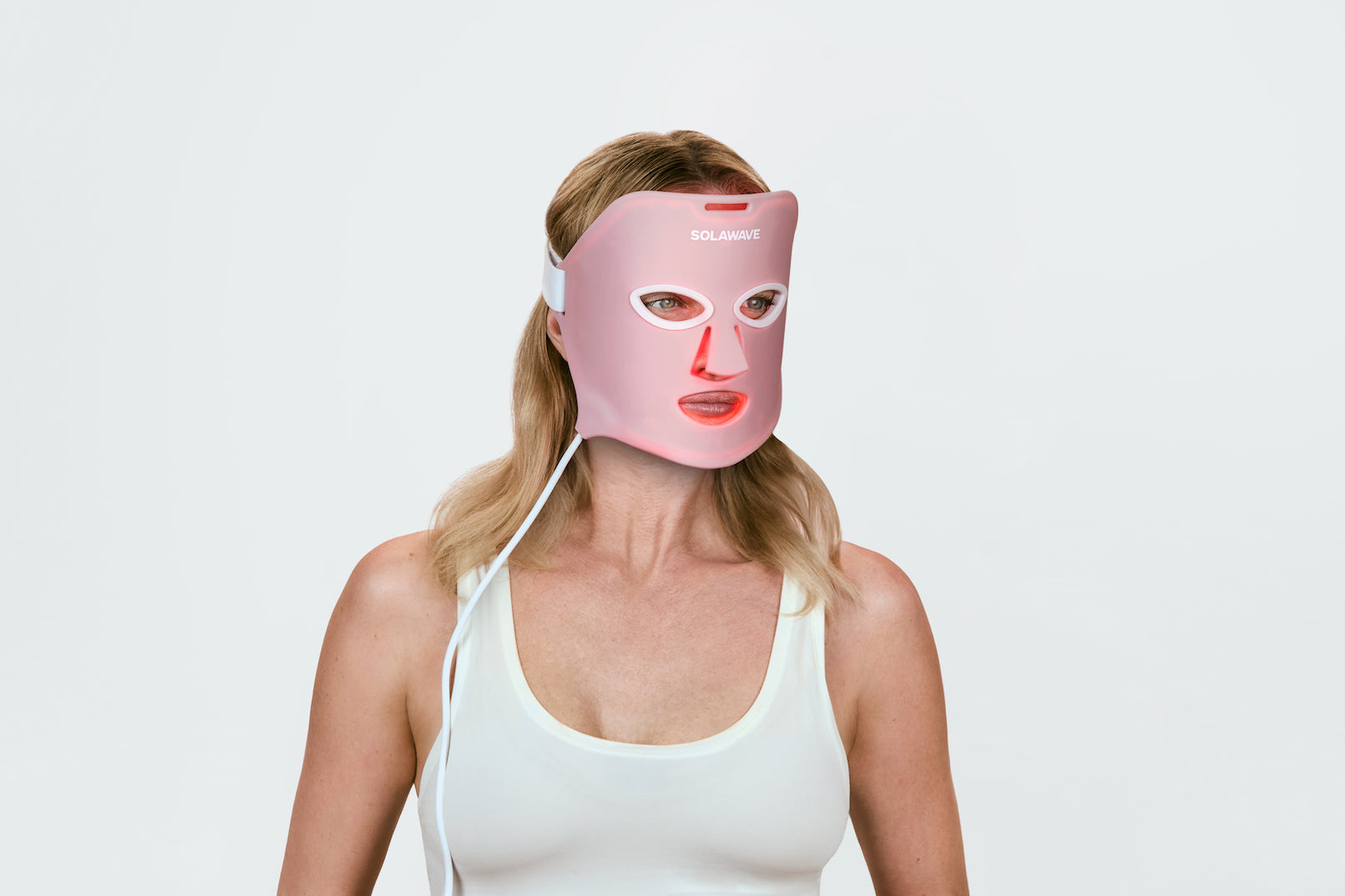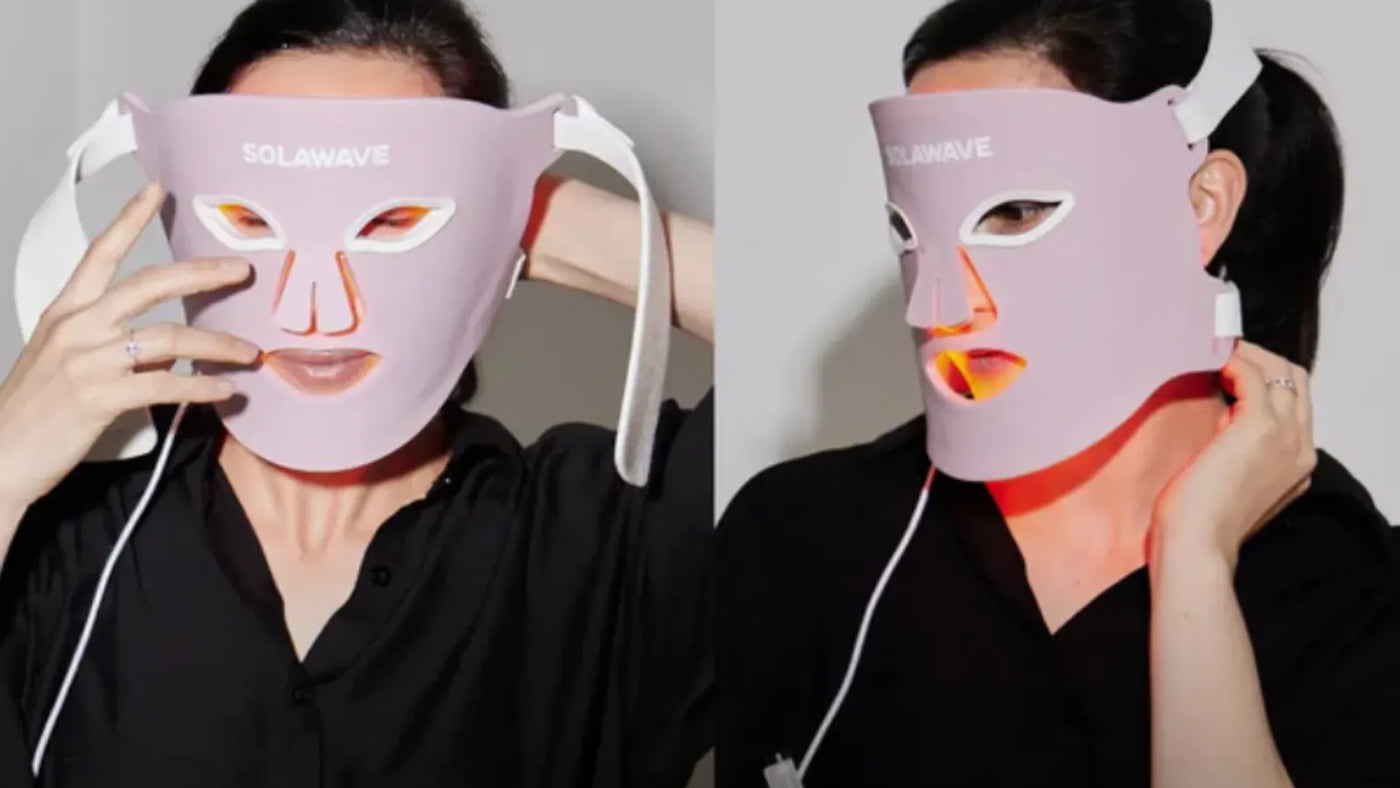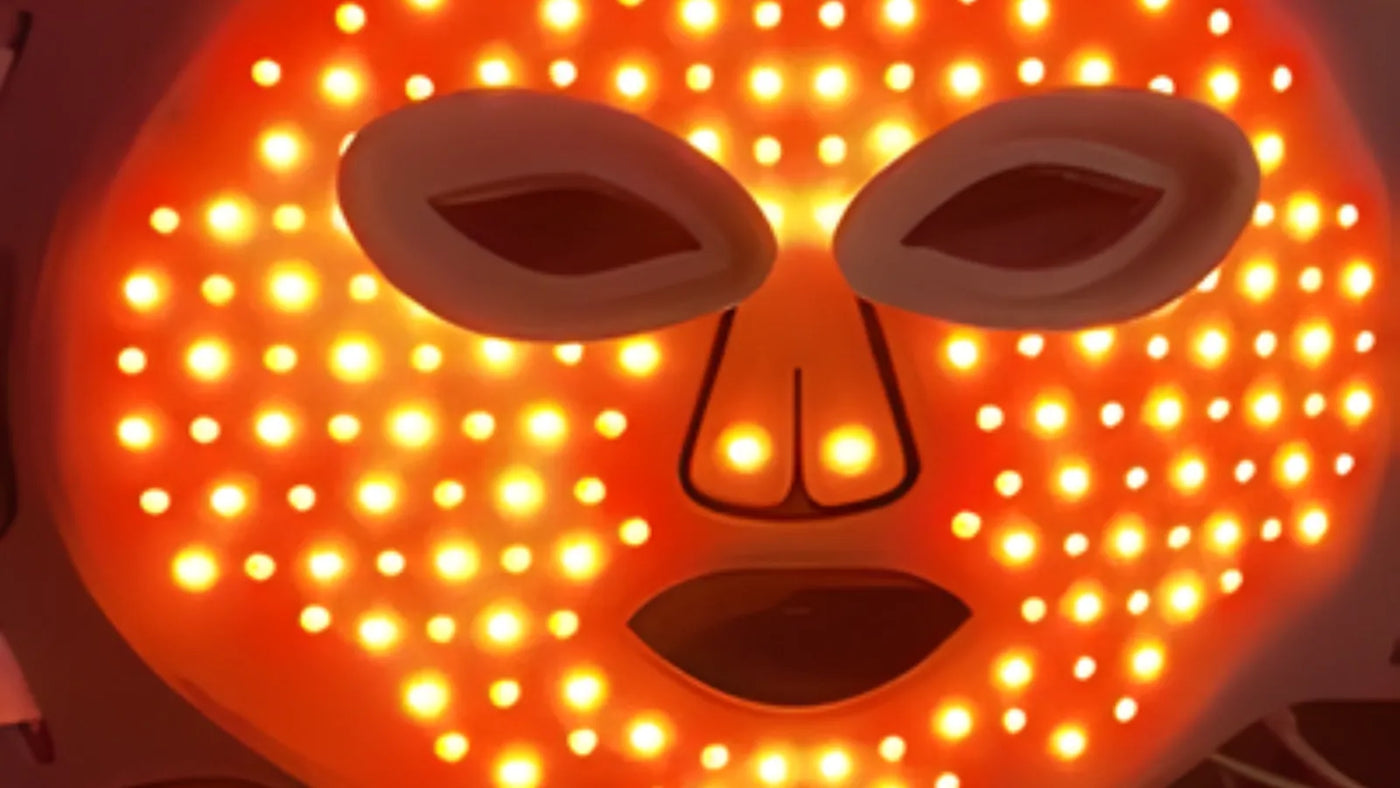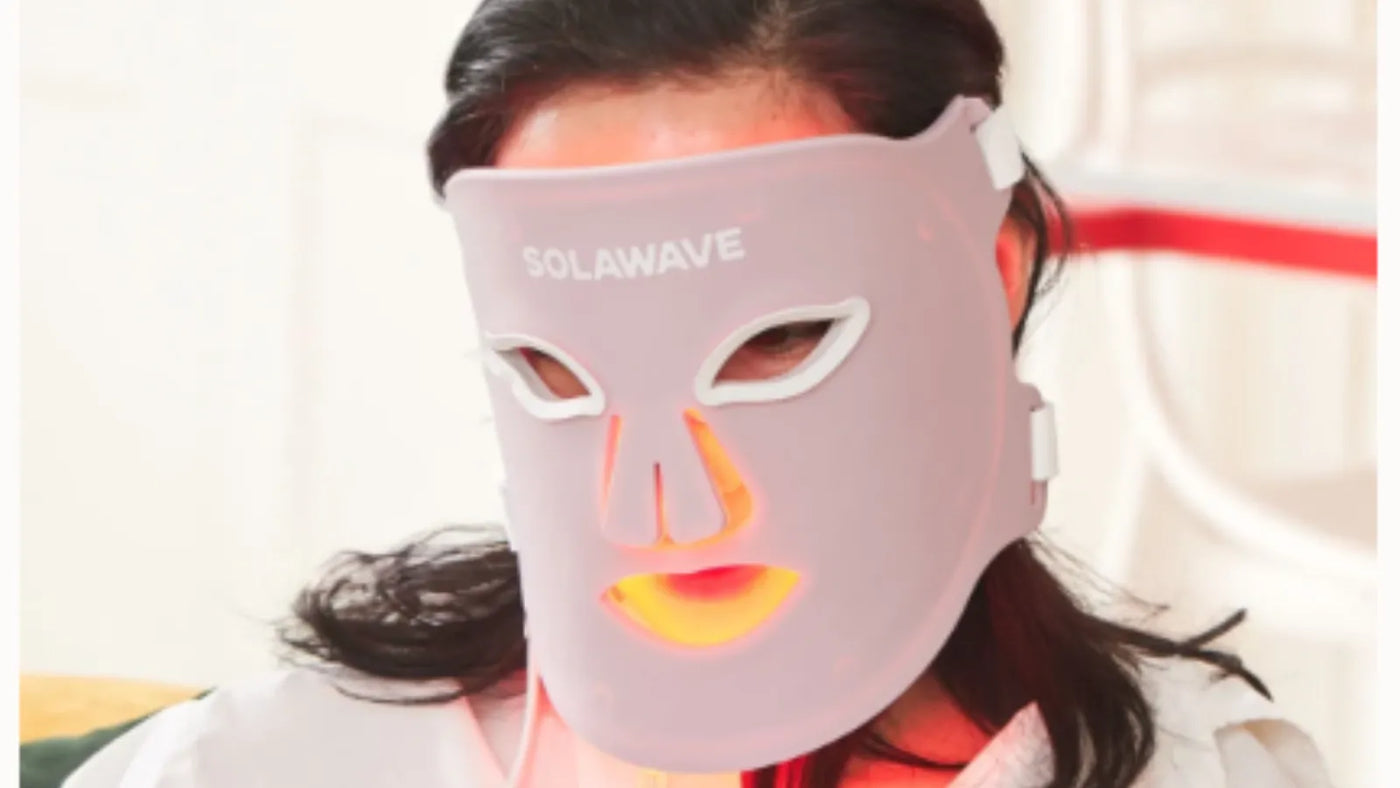

Blue Light Therapy for Inflammation: Can It Help?
Light Therapy has become a popular choice in skincare, offering gentle and effective ways to address common concerns. Blue Light and Red Light Therapy each play unique roles—Blue Light targets acne-causing bacteria and helps control oil, while Red Light focuses on calming the look of redness and irritation. In this article, you’ll discover how Blue Light Therapy can help reduce the look of acne-related inflammation by addressing the root causes of pimples and supporting a clearer, healthier-looking complexion.
What Is Blue Light Therapy?
Blue Light Therapy is an advanced skincare treatment that uses a specific wavelength of blue light to help address visible skin concerns, especially pimples. This technology is rooted in phototherapy, which means using different types of light to support the appearance of healthier skin. In skincare, Blue Light Therapy is valued for its ability to target the look of pimples and support a clearer complexion without harsh chemicals or invasive procedures.
When Blue Light is applied to your skin, it penetrates the upper layers and interacts with oil glands. Most importantly, it targets and destroys acne-causing bacteria, specifically the type known as P. acnes, which lives on the skin’s surface and contributes to pimples. By reducing these bacteria, Blue Light Therapy helps deter future pimples and supports a healthier-looking complexion.
Devices like the Bye Acne 3-Minute Pimple Spot Treatment make it easy to use Blue Light Therapy at home. These tools are designed for targeted care, allowing you to treat individual pimples quickly and conveniently. The treatment is gentle, non-invasive, and suitable for most skin types, making it a seamless addition to your daily skincare routine.
How Blue Light Therapy Addresses Acne-Related Inflammation
Acne-related inflammation often starts when bacteria and excess sebum (oil) clog your pores. This combination can trigger visible swelling, redness, and discomfort around pimples. Blue Light Therapy helps reduce the look of inflammation by addressing these root causes.
First, Blue Light Therapy destroys acne-causing bacteria on the skin’s surface. Reducing the number of these bacteria helps minimize the triggers that lead to pimples and the inflammation that follows. Second, Blue Light Therapy helps regulate sebum production. When your skin produces less oil, your pores are less likely to become clogged, which means fewer pimples and less visible inflammation over time.
It’s important to note that while Blue Light Therapy helps reduce the look of inflammation by targeting bacteria and oil, it does not directly reduce redness. For calming the appearance of redness and irritation, Red Light Therapy is the preferred option. Blue Light Therapy works best as a spot treatment and preventive tool, helping you manage the visible effects of acne by addressing its underlying causes.
Red Light Therapy vs. Blue Light Therapy for Acne
Blue Light Therapy and Red Light Therapy each play unique roles in supporting healthier-looking skin, especially if you’re dealing with pimples. Blue Light Therapy is designed to target acne-causing bacteria and help regulate oil production. Addressing these root causes with Blue Light helps prevent new pimples and treats existing ones, making it a go-to option for spot treatment and ongoing prevention.
Red Light Therapy, on the other hand, is known for its ability to reduce the look of redness and calm the appearance of irritated skin. While Blue Light focuses on bacteria and oil, Red Light soothes the skin and supports its natural recovery process, especially after a breakout.
Combining both Blue Light and Red Light Therapy can make a noticeable difference in the look and feel of your skin, especially if you’re dealing with pimples and redness. The Bye Acne 3-Minute Pimple Spot Treatment from Solawave is designed to deliver this dual-action approach in one easy-to-use device. With just three minutes per spot, you can target pimples at their source and support your skin’s natural recovery process—all from the comfort of your home.
The Bye Acne device uses Blue Light Therapy to help eliminate acne-causing bacteria and reduce excess oil, which are two of the main triggers for pimples. Addressing these root causes means you're not just treating current pimples, but you’re also helping to prevent new ones from forming. This makes the device a smart choice for anyone looking to maintain a clearer, more balanced complexion over time.
At the same time, the device harnesses the power of Red Light Therapy to calm the look of redness and soothe irritated skin. Red Light is known for its ability to support the skin’s natural healing process, making it especially helpful after a breakout or during times when your skin feels sensitive.
The Bye Acne device is portable, pain-free, and non-invasive, so you can easily incorporate it into your daily skincare ritual. It’s dermatologist-approved, FDA-cleared, and designed for both beginners and Light Therapy enthusiasts. Whether you’re at home or on the go, this device gives you the flexibility to treat pimples quickly and effectively, while also supporting healthier-looking skin overall.
What to Expect During a Blue Light Therapy Session
A typical Blue Light Therapy session is simple and comfortable, whether you’re using an at-home device or visiting a professional. With at-home light therapy devices like the Bye Acne 3-Minute Pimple Spot Treatment, you start by cleansing your skin to remove any makeup, oil, or sunscreen. Then, you place the device directly over the pimple or area you want to treat and turn it on. The device delivers targeted Blue Light for about three minutes per spot, automatically timing each session so you don’t have to worry about overexposure.
Blue Light Therapy is gentle and non-invasive, so you won’t experience pain or downtime. Most people find the treatment relaxing and easy to incorporate into their daily routine. For best results, you can use Blue Light Therapy daily or as often as recommended by the device instructions. Consistency is key for maintaining clearer, healthier-looking skin.
Who Should Consider Blue Light Therapy?
Blue Light Therapy is a great option if you have mild to moderate pimples, oily skin, or experience frequent breakouts. It’s especially helpful if you’re looking for a gentle, non-invasive way to target pimples without harsh chemicals or complicated routines. Because Blue Light Therapy helps manage bacteria and oil, it’s well-suited for anyone wanting to prevent new pimples and support a clearer complexion.
Most healthy adults can use Blue Light Therapy, but there are some considerations. If you have certain medical conditions, are under 18, are pregnant or breastfeeding, or have a known sensitivity to light, you should consult a skincare professional before starting treatment. Always check the device’s instructions and contraindications to ensure it’s the right fit for your needs. If you have any concerns or unique skin conditions, reaching out to a skincare professional can help you make the best choice for your skin.
Frequently Asked Questions
Can Blue Light Therapy be used with other acne treatments? Yes, you can use Blue Light Therapy alongside other skincare products and treatments, including serums, moisturizers, and sunscreen. It also works well with other forms of Light Therapy, such as Red Light Therapy, for a more comprehensive approach to skincare. Just be sure to follow the instructions for each product and device to get the best results and avoid irritation.
How long does it take to see results? Many people notice visible improvements in the look of active pimples within a few days of consistent Blue Light Therapy use. For others, it may take several weeks of regular sessions to see the full benefits. According to Solawave’s science page, consistency is key—using your device daily or as recommended helps maintain a clearer, healthier-looking complexion over time.
Are there any side effects? Blue Light Therapy is generally gentle, non-invasive, and does not require downtime. Most users experience little to no side effects. However, if you notice any irritation or discomfort, it’s best to pause use and consult a skincare professional. Always review the device’s instructions and contraindications before starting treatment, especially if you have sensitive skin or underlying health conditions.
Is Blue Light Therapy safe for all skin types? Blue Light Therapy is considered safe for most skin types because it’s non-invasive and free from harsh chemicals. Solawave devices are designed with safety in mind and are FDA-cleared. However, Blue Light Therapy is not recommended for those under 18, individuals with certain medical conditions, or those who are pregnant or breastfeeding. If you have a known sensitivity to light or any specific skin concerns, consult a skincare professional before starting Blue Light Therapy to ensure it’s right for you.
Conclusion
Blue Light Therapy offers a gentle, non-invasive way to help reduce the look of acne-related inflammation by targeting acne-causing bacteria and balancing oil production. Blue Light Therapy can help support a clearer, healthier-looking complexion and feel more confident in your skin every day.
Disclaimer: This article is intended for informational purposes only and should not be interpreted as medical advice or guidance. Always seek medical advice and care from a trusted healthcare professional.






















